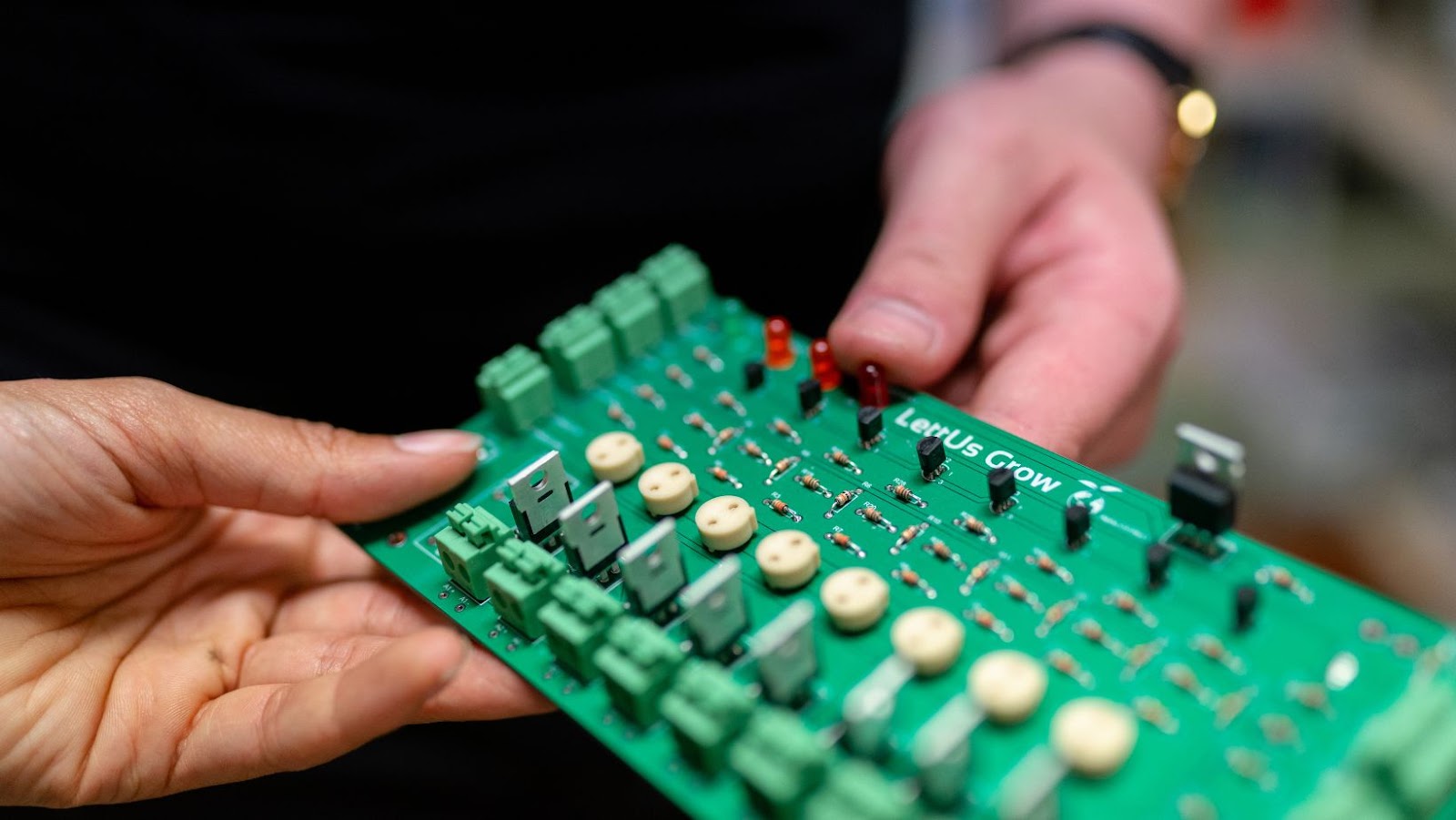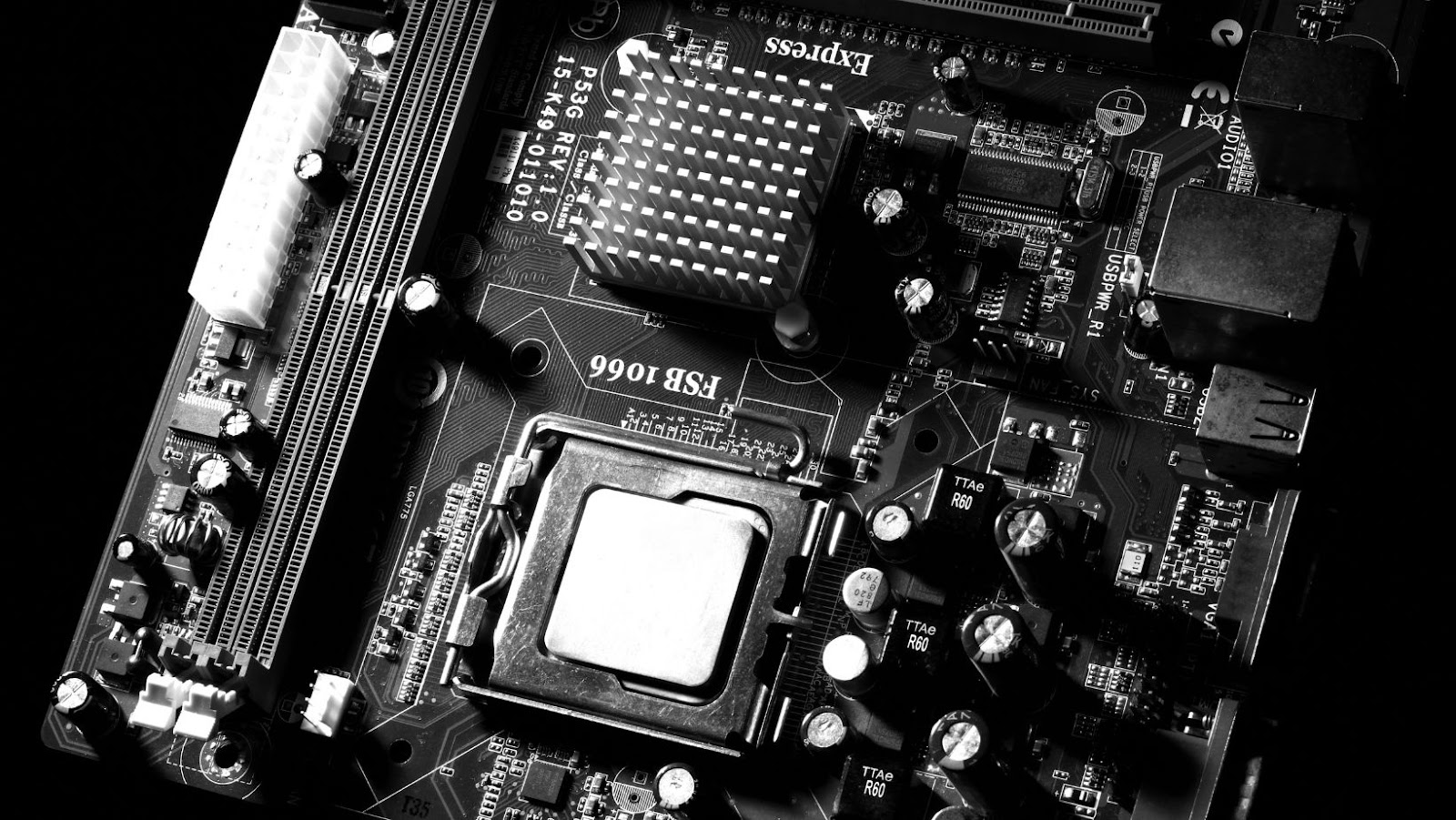The semiconductor foundry market is fiercely competitive, with Samsung and TSMC reigning as the industry’s primary suppliers. Although Intel has the technological capability to compete with and even surpass the two leaders in terms of both speed and power, its largest challenge is seizing a greater share of the market.
To take advantage of this huge opportunity, Intel is taking various strategic steps that are helping it secure partnerships and gain customer trust. This article will explore how Intel is approaching this challenge and how it hopes to beat its rivals Samsung and TSMC in the semiconductor foundry space.
Intel’s Strategy
Intel has long been the leader in the semiconductor space, but companies like Samsung and TSMC are giving them a run for their money.
Intel needs to stay ahead of the competition and find new solutions to the challenges they face. To do so, they have developed a strategy to stay ahead of their rivals.
In this article, we’ll cover Intel’s strategy and how they plan to beat their competition.
Investing in Advanced Process Technology
Intel is investing heavily to maintain its edge in advanced process technology, which will help the company to maintain their competitive position relative to rivals such as Samsung and TSMC. Intel’s investments are aimed at staying ahead of the competition in terms of performance and cost, by boosting the capabilities of the current14nm process and developing the 10nm process.
Intel has also announced plans to invest $20bn into building two new fabrication plants on its family of technologies; this would be in addition to the significant investments made in expanding existing facilities as well as research and development costs needed for advanced process nodes. Furthermore, Intel is working on developing a more efficient next-generation transistor known as FinFET that could provide higher performance at reduced power consumption than traditional transistors. This development could aid Intel’s efforts to remain competitive in securing customers’ orders who may choose a foundry provider with the most efficient solutions available.
By advancing their technology, Intel would have an advantage over competitors by offering products with better endurance or performance speeds than similarly-priced alternatives, enabling them to attain higher profitability from their profitable lines such as servers and personal computers. With an improved technological infrastructure, Intel’s semiconductor foundry services could become attractive for customers who need reliable production capacity at an attractive cost structure or lower power consumption than alternative solutions can offer.
Focusing on Foundry Solutions
Intel is focusing on several key strategies to achieve its long-term goals and become a major competitive force in the foundry market. Intel is leveraging its extensive technology portfolio and scale to offer unique solutions for customers. To this end, Intel offers process nodes as small as 10nm for mobile processors, and it has recently announced plans to introduce 7nm nodes.

Intel is also investing heavily in advanced packaging technologies such as Embedded Multi-die Interconnect Bridge (EMIB), Foveros 3D stacking packaging, and 2.5D interposers to enable more efficient chip designs that can be scaled across multiple devices. Additionally, Intel is creating specialized foundry services in areas such as III-V compound semiconductors, embedded flash memory (e-flash), liquid crystal displays (LCDs), and others that require specific expertise or capabilities beyond what’s available from general foundry suppliers such as TSMC or Samsung.
Finally, by acquiring Altera in 2015, Intel was able to expand its offerings into the field programmable gate array (FPGA) space. FPGAs offer higher levels of programmability compared to ASICs and allow for significantly faster development time when tackling customer issues related to digital systems integration across application domains such as automotive functional safety, cloud communications, image processing/computer vision, machine learning, robotics/autonomous vehicles, and more. This strategy allows Intel not only to tap into emergent markets with new FPGA products but also create customized chips built on the high-performance Intel architectures while differentiating their customer experience with a rich IP portfolio through deep domain expertise.
Investing in Automation and Robotics
In its effort to beat competitors Samsung and TSMC in the semiconductor foundry space, Intel has invested heavily in automation and robotics throughout their factories. This not only streamlines production and improves the quality of their products, but it also cuts down on labor costs associated with manual processes.

Intel’s move to automate is part of its strategy to make its manufacturing process larger, faster, and more efficient. Automation has helped Intel reduce costs across all stages of its operations from design, fabrication, testing, and packaging. In addition, robotic processes free up employees to focus on higher value-added tasks such as problem solving or more creative endeavors.
Beyond adoption of robotics technology in production and manufacturing operations, Intel is currently investing in new strategies for ushering in next-generation semiconductor computing expertise that involves transitioning the industry from traditional silicon wafer fabrication processes to advanced 3D printing technologies. This will allow them to produce chips that are faster and more powerful than ever before while simultaneously increasing yields by 30%. 3D printing could revolutionize the complex business model of semiconductor foundries by driving down costs due to increased accuracy of fabrication techniques while also creating new opportunities for customization with wide reach potential as well as preparing for autonomous systems in industrial markets.
How Intel Aims to Beat its Rivals Samsung and TSMC in the Semiconductor Foundry Space?
Intel is one of the top players in the semiconductor foundry space and is facing increasing competition from its rivals such as Samsung and TSMC. This has put Intel in a difficult position and has forced them to come up with creative solutions in order to stay ahead of the competition.
In this article, we will explore the challenges Intel is currently facing and the solutions they are attempting to pursue.
Overcoming the Cost Advantages of Rivals
Intel has something of a cost disadvantage when compared with Samsung and TSMC in regards to the semiconductor foundry space. In order to overcome this cost disadvantage, Intel is investing heavily in advanced process nodes and trying to trim costs through deep integration. This will allow Intel to better compete against its rivals, who have much larger scale for any given process node.
Intel has added some technology enhancements that have allowed it to achieve cost reductions versus its foundry competitors. For example, offloading lower complexity functions from the most costly CPUs into separate chips reduces overall design costs and simplifies production processes. Additionally, Intel has adopted techniques such as 3D FinFET transistor stacks, advanced lithography techniques, self-aligning deposition techniques, etc., which it believes will help bring down manufacturing costs.
Another area of focus for Intel is developing platforms that reduce design time by enabling customers to quickly develop highly customised designs based on customer requirements. These platforms typically come with shorter time-to-market cycles and are designed with reuseable building blocks which allow for faster modifications and faster time-to-market windows even when customer requirements change significantly from one product generation to another. Combining this approach with further advancement in self-aligning deposition techniques should help reduce development costs associated with the customer’s product portfolios while still delivering leading performance capabilities that meet their needs.
By leveraging these methods, Intel aims to reduce its overall cost structure while still achieving high capacity utilization levels that can rival their competitors in the space. Ultimately, this will help ensure Intel stays competitive as well as offer differentiated services across different markets as customer preferences continue evolving over time.
Competing with Rivals in Design and Packaging Solutions
Intel is competing with rivals like Samsung and TSMC in the semiconductor foundry space to offer design and packaging solutions that can power the new generation of edge technologies, including 5G, AI and Internet of Things (IoT) applications. As a result, the company is developing advanced packaging solutions and technologies to deliver greater system-level performance, miniaturization and flexibility.

Intel is leveraging both its leading technology portfolio and industry experience to gain competitive edge in this space. Its products combine field programmable gate arrays (FPGA) with advanced 3D packaging technologies for better yield performance. To increase design efficiency, it’s focusing on die stacking technology for multiple die integration that provides maximum compute density. The Intel Flexible Die Stacking technology allows greater scalability of performance for data intensive workloads processed at the edge compared to systems designed using traditional two-dimensional single die integration.
The company has also made significant investments in other advanced packaging technologies which include Embedded Multi-die Interconnect Bridge (EMIB) and Embedded Multi-die Stacked System Memory (MSSM). These new technologies are more flexible than traditional MCMs or SoC designs, allowing designers to optimize their system designs depending on their specific needs such as design complexity or cost targets. EMIB bridges provide high bandwidth connection between chips enabling increased system performance without additional power consumption or sacrificing area constraints within the chip package. In addition, Intel’s MSSM solutions offer designers a cost effective high bandwidth system memory solution compared to traditional discrete DRAM with packages occupying minimal board space that reduces overall system cost.
As Intel continues its efforts to stay ahead in this competitive market, it remains focused on continuing innovation, creating faster more reliable semiconductor devices while providing customers with greater choice through its portfolio of platforms across different architectures including CPUs PCHs GPUs FPGAs ACCs SSD controllers etc。
Intel’s Opportunities
Intel has been investing in new technologies and partnerships in an attempt to beat its rivals Samsung and TSMC in the semiconductor foundry space.
This article will examine the opportunities that Intel is pursuing in order to stay ahead of the competition. In particular, we will look at how Intel can leverage its chip design and technology expertise to gain an edge over its rivals.
Leveraging its Existing Customer Base
Intel has the potential to leverage its existing customer base in order to gain a competitive advantage in the semiconductor foundry space. By utilizing its connections to many of the world’s leading technology companies and device manufacturers, Intel can access a broad base of potential clients who may be interested in using their services. Companies such as Apple, Dell and Lenovo are among some of Intel’s largest customers, which could allow them to leapfrog over their competitors by having an early relationship established with the new customers.
Additionally, Intel can use its existing cult-like following among many tech enthusiasts as a marketing tool in order to attract new clients. The company has built up a powerful reputation in the tech industry over the years that includes extremely loyal fans and knowledgeable technologists who are looking for solutions that are rooted in innovation and cutting-edge products. As such, Intel can capitalize on this positive attitude towards its products by creating personalized solutions tailored towards each customer’s demands while simultaneously utilizing user-friendly marketing campaigns that engage customers directly.
Leveraging its Technology Leadership
Intel has a long history of technology leadership, with many of its products at the cutting edge of innovation. It is utilizing this experience to stay ahead of competitors in the foundry space. In February 2021, Intel announced key advancements in transistor scaling that they believe will give them a competitive edge. These advancements will reduce signal delays and increase levels of power savings, eventually leading to smaller devices that are up to 10 times faster than current technologies.
Intel also touted their new packaging capabilities, which improve yield and lower costs for customers by integrating multiple chips into a single package. By combining components such as CPUs and GPUs into one package, Intel can deliver faster performance and reduce power consumption for complex computing tasks. Additionally, the company recently launched Intel Embedded Multi-die Interconnect Bridge (EMIB), an innovative technology that allows for the high-speed communication between two pieces of silicon within one package.
As part of their technology leadership strategy, Intel is investing heavily in process development and advanced lithography technologies like extreme ultraviolet (EUV). As it ramps up its production capabilities with EUV lithography, Intel will be able to produce finer line widths than ever before – leading to greater device density and miniaturized form factors for products like 5G modems and IoT devices. Ultimately this will result in more cost-effective solutions for customers while helping them gain an edge over competitors such as TSMC and Samsung in this rapidly advancing field.
Investing in Automation and Robotics
Intel is investing heavily in automation and robotics to try to stay ahead of its rivals Samsung and TSMC in the semiconductor foundry space. The company has added 200 robotic fabrication tools to its factories in recent years, and these robots are able to improve production times and yields while reducing defects. Intel also recently purchased a stake in an automated chip testing provider named Accile Technologies. This will allow Intel to further expand their automation capabilities, allowing them to remain competitive against Samsung and TSMC.
Intel is also developing their own robotics technology with the goal of automating more aspects of chip manufacturing. This includes the development of self-driving forklifts that can navigate Intel’s factories without human intervention, as well as robots capable of detecting equipment malfunctions and correcting them automatically. By investing in automation technology, Intel is hoping to reduce costs while increasing production speeds and yields, as well as improving safety conditions for their workers.
